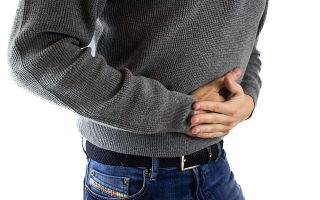Malabsorption syndrome is manifested by a complex of intestinal and extraintestinal symptoms, the cause of which is poor absorption of nutrients in the small intestine .
Content
Causes
Absorption disorders can be congenital . They are identified by pediatricians in the first months of a child’s life.
If someone in a person’s family suffered from similar disorders, then perhaps they have a genetic predisposition . In acute illness or when consuming foods and substances that have a toxic effect on the intestinal mucosa, this predisposition can develop into diseases such as:
soy intolerance;
tropical sprue;
unclassifiable sprue;
collagen sprue
Such disorders are called primary .
The most common secondary malabsorption disorders are associated with diseases of the small intestine or other organs. A list of diseases is given at the end of this article.
Symptoms
As a rule, with all types of this pathology, chronic diarrhea , in which all traditional types of treatment do not work.
The second important sign is weight loss.
Simultaneously with these two symptoms, abdominal pain, rumbling and transfusion, and flatulence .
A characteristic feature is a change in the appearance of the tongue. It acquires a crimson color with enlarged papillae, becomes swollen with tooth marks along the edges, cracks and ulcerations appear. Later, atrophy of the papillae occurs and then the tongue becomes smooth, as if polished. Weeping cracks and ulcerations may appear in the corners of the mouth and at the wings of the nose.
Gallstones and kidney stones can also be a consequence of this syndrome.
Malabsorption syndrome can be manifested by disorders of the endocrine system such as hypotension, weakened function of the gonads, which in turn causes menstrual irregularities in women and impotence in men.
Other symptoms are associated with impaired absorption of one or another vitamin and microelement.
Deficiency of iron, vitamin K
Iron deficiency is indicated by brittleness and thinning of nails and hair. A lack of vitamin K leads to bleeding.
Deficiency of calcium, magnesium, vitamins D, A and B1
Malabsorption of calcium, magnesium and vitamin D is accompanied by seizures and leads to the development of osteoporosis and osteoarthritis.
Deficiency of vitamins A and B1 causes dryness of the conjunctiva and cornea, as well as night blindness.
Vitamin PP deficiency
This affects the skin, gastrointestinal tract and nervous system. This case is characterized by chronic diarrhea, which cannot be treated without large doses of nicotinic acid. Skin changes appear in the form of red-brown erythema with sharp boundaries of the lesion, swelling of the skin, dryness, roughness, and peeling. With a decrease in inflammatory phenomena, persistent, grayish-brown pigmentation remains on the affected areas of the skin, and depigmentation such as vitiligo appears less frequently.
Damage to the nervous system is characterized by asthenia, impaired skin sensitivity in the absence of pain.
Zinc deficiency
The lack of this element is especially dangerous for children, as it contributes to a lag in physical development.
In adults, a simultaneous deficiency of vitamin A and fatty acids causes hair loss.
Diagnostics
Functional absorption tests are used as laboratory research methods.
, indirect methods are mainly used . Substances are taken orally by the patient or administered through a tube. Next, their quantity in the blood, saliva, urine and feces is determined.
Both of these methods reveal a significant decrease in absorption only in the later stages of the disorder. Detection at earlier stages has become possible using the perfusion method .
Treatment
The treatments used depend primarily on the disease that is the cause of the pathology. However, there are a number of measures that must be applied for all types of violations:
prescribing a diet high in protein;
restoration of impaired metabolism;
elimination of dysbacteriosis;
stimulation of digestive and transport processes, affecting intestinal trophism and motility.
Diet
During periods of severe diarrhea (diarrhea), diet No. 4 . After the cessation of profuse diarrhea, patients are transferred to diet No. 4b . After stable normalization of stool and during the period of remission of the disease, diet No. 4b , physiologically complete, with a high protein content. When milk tolerance decreases, preference is given to kefir, mild cheeses, and curd products.
Patients with low blood protein levels are prescribed enteral nutrition .
At the same time, a complex of B vitamins, nicotinic acid and fat-soluble vitamins A, D, K and E are prescribed.
Drugs
Antibacterial therapy is a mandatory component of treatment. It is aimed at suppressing microbial flora in the small intestine and reducing opportunistic flora in the large intestine. It is described in more detail in this article .
To improve intestinal digestion, drugs containing pancreatic enzymes, hydrochloric acid with pepsin and bile are used. Enzyme preparations include Creon, Pancreatin, Festal, Digestal and others. To slow down the propulsive function of the intestines, Imodium is prescribed.
Folk remedies
In case of exacerbation of diarrhea, along with drugs (smecta, etc.), it is recommended to drink a decoction of herbs: bird cherry fruits 2 g, caraway fruits 2 g, yarrow 2 g, valerian root 2 g, cinquefoil rhizome 2 g. Prepare 200 g of the mixture and take 1- 2 tablespoons 30 minutes before meals until stool normalizes.
Physiotherapy
Exercises should be aimed at stimulating metabolic processes and restoring impaired intestinal regulation.
Therapeutic complexes should be started after diarrhea has stopped, since physical activity stimulates the motor function of the gastrointestinal tract. It is advisable to use core exercises - turns, bends, abdominal relaxation and breathing exercises aimed at developing diaphragmatic breathing. After the clinical symptoms subside, it is necessary to recommend walking exercises with a moderate load on the abdominal muscles and increased load on the limbs.
Diseases leading to malabsorption
Scleroderma
Generalized mastocytosis
Pneumatosis of the small intestine
Endocrine disorders
Vascular disorders
Drug-induced intestinal lesions
Radiation injuries







